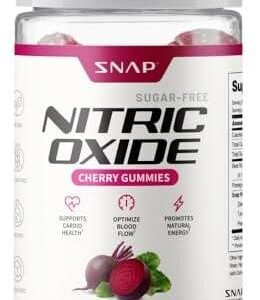In a world where indulgence often comes hand-in-hand with guilt, the quest for a balanced diet that satisfies our cravings has never been more relevant. As health-conscious consumers strive to reduce their sugar intake amidst rising concerns over health and wellness, the sweet thrill of flavor need not be sacrificed. Enter the art of savoring sweetness without the excess: a culinary journey that embraces creativity, innovation, and the myriad of alternatives available today. In this article, we’ll explore how to transform everyday dishes, showcasing techniques and ingredients that enhance taste while drastically cutting down sugar content. Whether you are a seasoned chef or a home cook seeking to elevate your meals, join us as we uncover the secrets to delicious, guilt-free culinary creations that promise to delight the palate without the sugar crash.
Table of Contents
- Embracing Natural Alternatives for Sweet Satisfaction
- The Art of Flavor Enhancement: Spices and Extracts
- Crafting Balanced Recipes: Tips for Reduced Sugar Baking
- Mindful Eating: Cultivating a Sweet Tooth Without Sugar
- Final Thoughts
Embracing Natural Alternatives for Sweet Satisfaction
In a world increasingly aware of the downsides of refined sugar, it’s no surprise that many are seeking out natural alternatives that not only satisfy the sweet tooth but also enhance health. Nature has gifted us with an array of wholesome sweeteners, each with unique flavors and benefits. Here are some of the most popular options that can seamlessly replace traditional sugar:
- Honey: A classic choice, honey offers a richer taste and a plethora of antioxidants.
- Maple Syrup: This delightful syrup brings not just sweetness but also a hint of complexity with its earthy undertones.
- Agave Nectar: With a low glycemic index, agave is perfect for those mindful of their blood sugar levels.
- Stevia: Derived from the leaves of the stevia plant, this sweetener has zero calories and is incredibly potent.
Incorporating these alternatives into your cooking and baking routines can elevate your dishes while nurturing your body. Understanding each option allows you to tailor your ingredients to suit the specific flavor profiles of your recipes. For a quick comparison, consider the table below that highlights some key characteristics of these sweeteners:
| Sweetener | Calories per Serving | Glycemic Index | Flavor Notes |
|---|---|---|---|
| Honey | 64 | 58 | Floral, Robust |
| Maple Syrup | 52 | 54 | Earthy, Caramel |
| Agave Nectar | 60 | 15 | Mild, Sweet |
| Stevia | 0 | 0 | Herbaceous, Sweet |
The Art of Flavor Enhancement: Spices and Extracts
Exploring the world of spices and extracts opens a treasure chest of flavor possibilities, allowing you to elevate your dishes without relying heavily on sugar. Cinnamon, for instance, adds a warm, sweet undertone with the added benefit of potential metabolism-boosting properties. Vanilla extract offers a rich sweetness without the calories, transforming everything from baked goods to smoothies into decadent delights. Meanwhile, nutmeg and cardamom can introduce a complex, aromatic quality that is both comforting and sophisticated, making your recipes taste indulgent with a mere pinch. By integrating these ingredients into your cooking, you can create a symphony of flavors that comforts the palate and satisfies the sweet tooth.
In addition to spices, consider incorporating fruity extracts that bring natural sweetness into your dishes without added sugars. Almond extract is an enchanting choice for enhancing desserts, while lemon and orange extracts can brighten both sweet and savory recipes, adding a refreshing zest that amplifies overall flavor. Here’s a simple comparison of how various spices and extracts can be effectively utilized to achieve satisfying sweetness:
| Ingredient | Use | Flavor Profile |
|---|---|---|
| Cinnamon | Oatmeal, baked goods | Warm & sweet |
| Vanilla Extract | Cakes, smoothies | Rich & creamy |
| Nutmeg | Custards, warm drinks | Spicy & nutty |
| Almond Extract | Cookies, pastries | Sweet & nutty |
Experimenting with these flavor-enhancing options can lead to delightful culinary creations where sweetness shines through without the extra sugar. By layering flavors thoughtfully, you’ll find that enhancing taste is not only an art, but also a satisfying challenge that rewards patient cooks and adventurous palates alike.
Crafting Balanced Recipes: Tips for Reduced Sugar Baking
When reducing sugar in your baking, balance is key. Start by understanding the role sugar plays beyond sweetness; it contributes to moisture, texture, and browning. To maintain that harmony, consider integrating ingredients that enhance flavor without adding excessive sweetness. For example, use vanilla extract, cinnamon, or nutmeg, which can elevate the flavor profile while allowing you to cut back on sugar. Additionally, explore the use of healthier sweeteners like maple syrup, honey, or stevia, but be mindful of their conversion ratios to ensure your recipes remain consistent.
Another strategy for crafting lower-sugar recipes lies in adjusting the ratio of dry to wet ingredients. When you reduce sugar, it’s essential to compensate with other elements to preserve texture. Introduce ingredients that provide moisture, such as applesauce, yogurt, or mashed bananas. This not only maintains the texture but also adds valuable nutrients. Below is a simple comparison table illustrating sugar substitutions for popular baking ingredients:
| Ingredient | Standard Sugar Amount | Reduced Sugar Substitute |
|---|---|---|
| Cakes | 1 cup | ¾ cup applesauce |
| Cookies | 1 cup | ½ cup honey |
| Muffins | ¾ cup | ½ cup agave syrup |
Mindful Eating: Cultivating a Sweet Tooth Without Sugar
Imagine indulging in delightful flavors without the guilt of added sugar. To cultivate a sweet tooth that satisfies your cravings, consider exploring natural alternatives that enhance taste without compromising health. Some exciting options include:
- Fresh Fruits: Bursting with natural sweetness, fruits like berries, apples, and mangoes make for perfect snacks or additions to meals.
- Spices: Cinnamon, vanilla, and nutmeg can elevate the sweetness of dishes, adding depth and warmth.
- Natural Sweeteners: Honey, maple syrup, and agave nectar provide sweetness while being less processed than refined sugar.
- Dried Fruits: Raisins, dates, and apricots serve as chewy, flavorful treats that satisfy cravings.
Incorporating these elements into your diet doesn’t just keep sweetness alive; it also enriches your culinary experience. Consider the following tips for mindful eating:
| Strategy | Description |
|---|---|
| Portion Control | Serve smaller portions of treats to enjoy flavors without overindulgence. |
| Savoring | Take time to taste every bite, allowing your palate to fully appreciate natural sweetness. |
| Mindful Pairings | Combine savory and sweet ingredients to heighten flavor complexity and satisfaction. |
Final Thoughts
As we conclude our exploration of savoring sweetness while reducing sugar intake, remember that cutting back doesn’t mean sacrificing joy in your culinary creations. With a treasure trove of natural alternatives, innovative techniques, and mindful practices at your disposal, you can craft delicious dishes that both delight the palate and support your health goals. Embrace these transformative strategies and experiment boldly in your kitchen, allowing your taste buds to thrive without the heavy hand of sugar.
So go forth and indulge in the art of flavor—where each bite can be a celebration of sweetness redefined. The journey to a more vibrant, flavorful life begins with simple adjustments that prioritize your well-being without compromising the joys of eating. Savor the sweetness of life, one mindful bite at a time.




